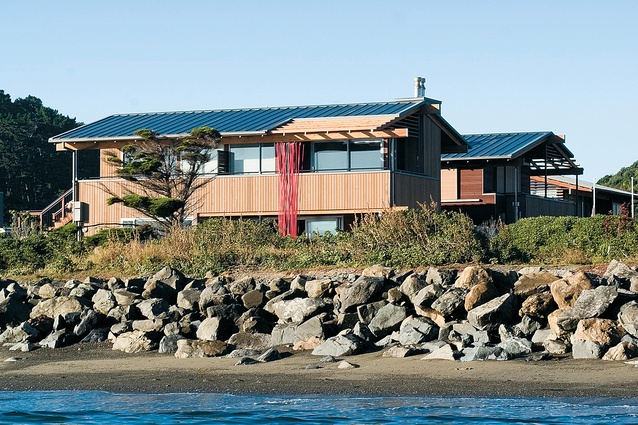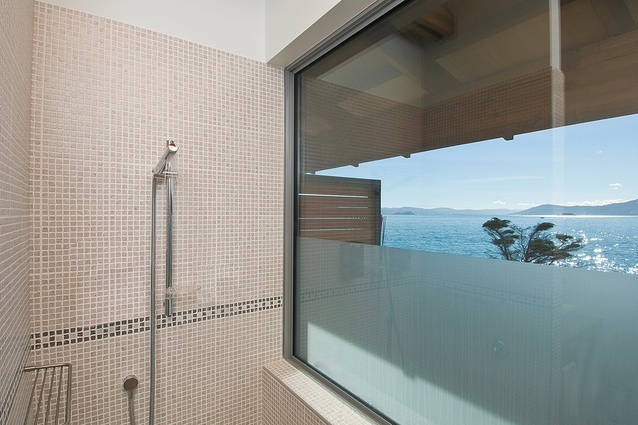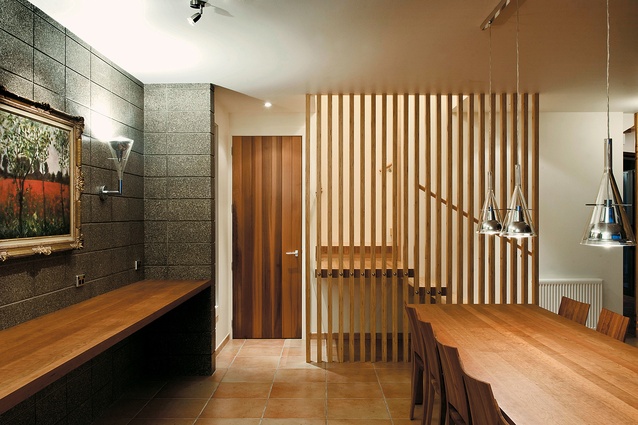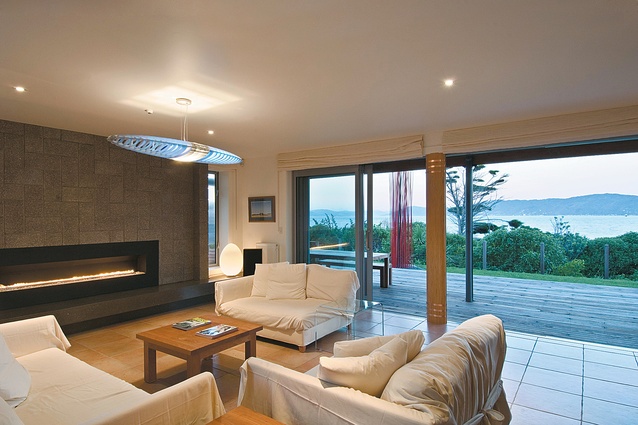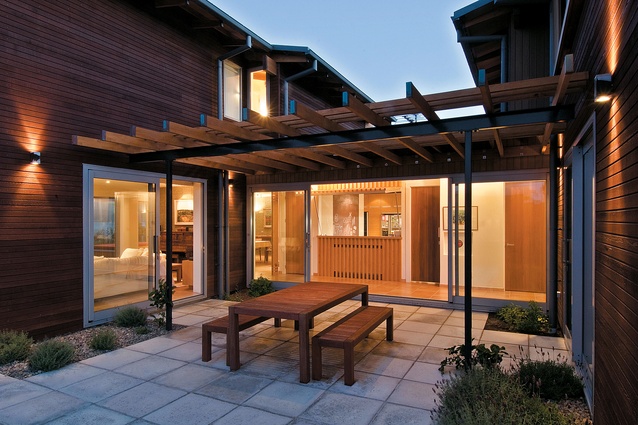Houses Revisited: Rock steady
In 2008 near Wellington Heads, Novak & Middleton designed a solid house for a very discerning client: a fusion of Swiss client and Kiwi architect.
Familiar with fusion cuisine? How about fusion architecture? The Swiss client for this Seatoun building designed by Novak & Middleton Architects wanted a house in New Zealand, but not a traditionally New Zealand house. Swiss buildings tend to be made of heavier stuff than their Kiwi equivalents, and Swiss standards of construction and detailing are famously rigorous.
As it happens, the site the client chose for his New Zealand house is most suited for a Swiss-style approach. The property is only metres from a wild coastline, just to the harbour side of the Wellington Heads. You feel you could reach out and almost touch Steeple Rock. The wind can howl here, and the fate of the Wahine easily comes to mind. In New Zealand only Wellington can offer such a dramatic natural environment in such close proximity to a cosmopolitan centre.
So: how does a European sensibility reveal itself in this project? Simon Novak, director of Novak & Middleton Architects, says his client wanted a traditional form – traditional where he comes from, that is – and solid construction. That is, a pitched zinc roof and a concrete shell, albeit one that is indigenised by an external layer of timber cladding. (Mind you, there is a tradition of nakedly concrete buildings around the approaches to Wellington harbour: the World War II gun emplacements which are still extant on the cliff-like hills above the coast.)

The house is double-glazed against the elements and heavily insulated against the noise of their occurrence. Simon Novak says his client does not share the typical New Zealand fondness for the sound of rain on a tin roof, nor does he share the local tolerance for deep-freeze living conditions. The house is heated by hot water piped through radiators.
Another point of difference – and one that the architect had to accommodate – occurred around the use of interior flooring materials. New Zealanders have gone wild for concrete flooring, but the Swiss client for this house preferred terracotta tiling to terrazzo, finding the grey aggregate cold. In the ground floor living and circulation areas the architect, of course, had to accede to his client’s preference, and imported clay tiles are laid upon the 150mm concrete base.

But Simon Novak has incorporated some visible concrete elements in the design. The interior walls of the main living room that looks out to the water are built of concrete blocks, made from a soft, pumice-rich Auckland mix. The same blocks are used as an overlay in herringbone pattern over the large fireplace. This is a materially rich house: both Swiss client and New Zealand architect can probably agree that wood adds warmth and texture to an interior, and there is a lot of glulam ply in the house.
Like many of the new houses in this precinct – but more successfully than most – the house is organised around a north-facing courtyard. Along the southern border of the site the house presents a fairly mute face to the weather coming over from Cook Strait. The courtyard is overlooked by the well-equipped kitchen – the house functions as both residence and guesthouse – that is located to the side of the house’s long central spine. A large shutter pulls down to hide the kitchen; functions are certainly kept more separate in this house than in the familiar modern box.
On the upper floor of the main building, well-appointed guest rooms look out to the harbour. A separate structure is given over exclusively to guest accommodation. The parking area between the main and adjunct houses reveals some of the unusual attention to detail typical of this project: a symbol for a handicapped space, picked out in contrasting grey pavers.
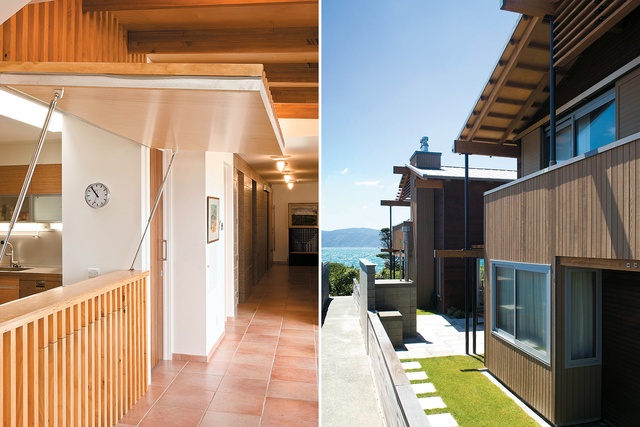
A swimming pool runs along much of the length of the north courtyard, next to a pergola with beams telescoped to produce an infinity effect. In the pool area there is an external pizza oven – for those balmy Wellington summer evenings – and next to the courtyard there’s a spa room lined in hoop pine. (An amenity which may get greater use.)
At the front of the house, that is, the sea side, the property borrows a wild garden from the adjoining coastal reserve, and the client makes his own offering to the local Furies: a Kon Dimopolous wind sculpture, a smaller sibling to the artist’s work on Cobham Drive, near the airport.
This is an accomplished and comfortable house on a spectacular but demanding site. It stands out from its neighbours, a solid burgher in arriviste company. It’s nice to be reminded that there are other ways of designing a house in New Zealand.
Click here to see more Houses Revisited. And sign up to our email newsletters to receive Houses Revisited straight to your inbox.


